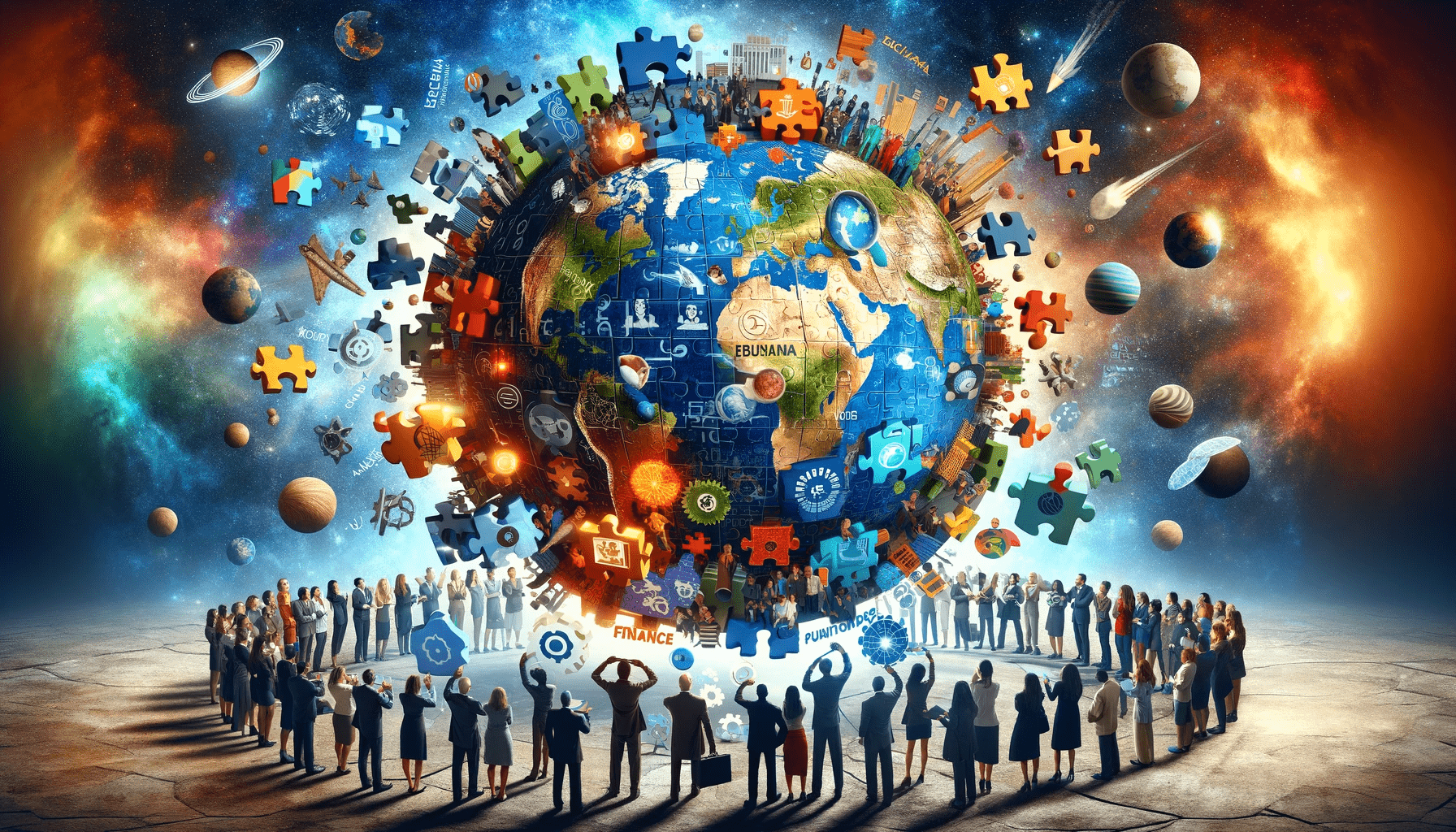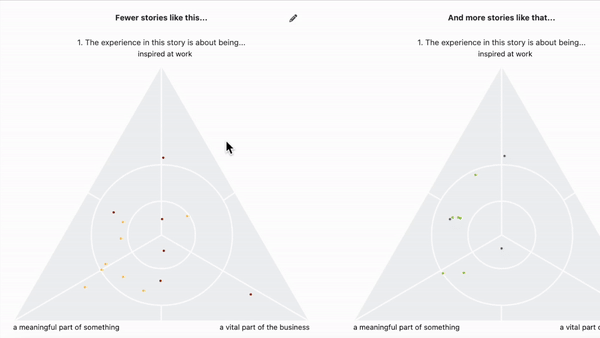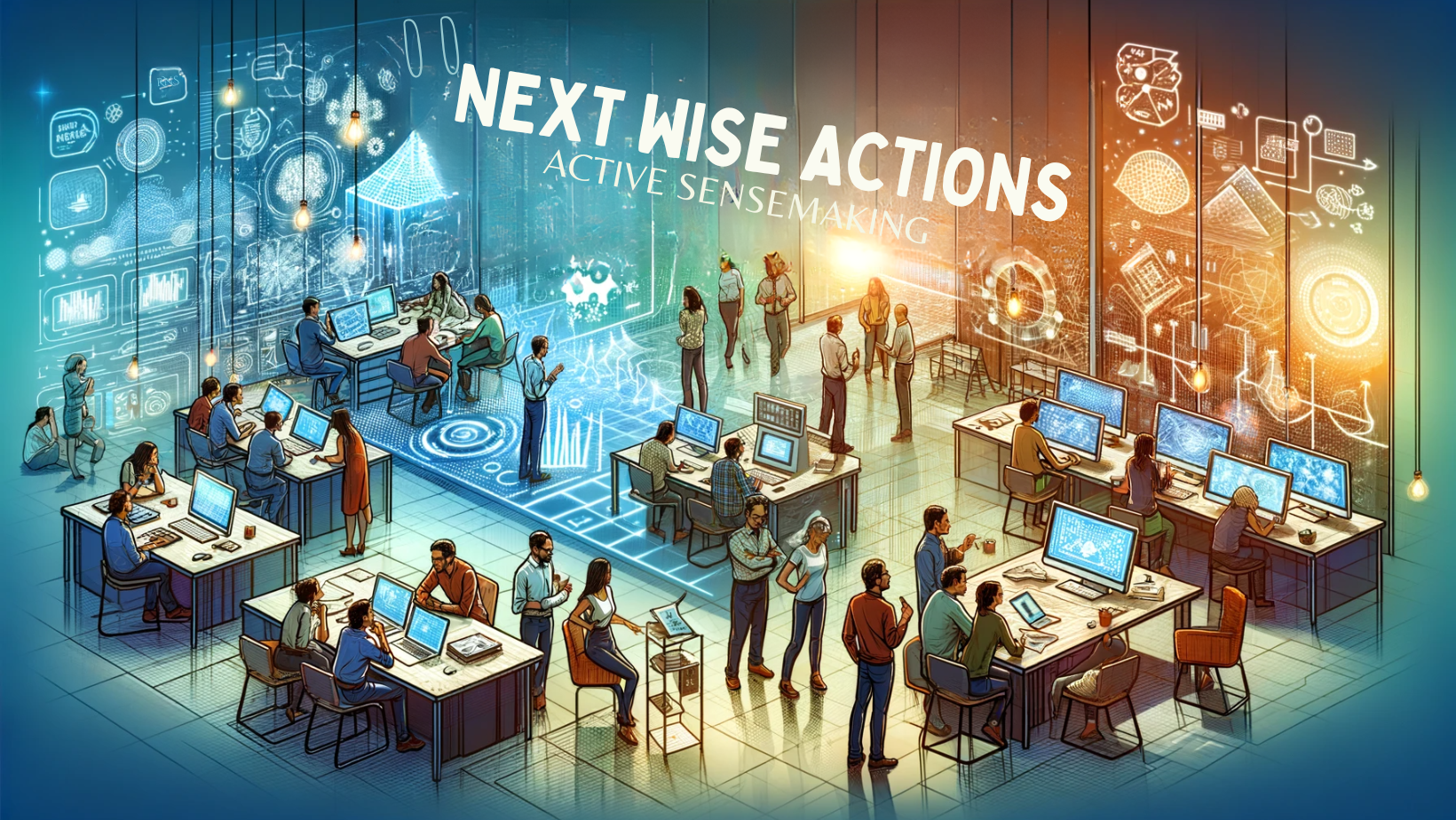Sustainable Systems Change
by Glenda Eoyang, Ph.D.

WHAT is the challenge?
Around the world and across disciplines and cultures, people are calling for sustainable, systemic change. The need is obvious and urgent, from the traumatic weather disasters to challenges of peace, justice, and security. We have many ways to describe and call for more coherent and productive futures, but few reliable approaches for collective action or for assessing progress over time. It is relatively easy to talk about challenges at a global scale or to focus on individual actions, but few tools exist to bridge between individual sensemaking and action and system-wide patterns of collective sensemaking and collaborative action. Active Sensemaking fills this strategic gap.
The reason for the missing link is clear. The challenge is daunting. Effective action toward large scale strategic transformation will require a new paradigm for change. It must acknowledge each individual perspective, while discovering the shared patterns of the whole. It must touch all facets of human activity, including financial, social, educational, political, cultural, and economic well-being . It must adapt to local conditions and needs while moving toward a global pattern of transformation. It must inspire, inform, and enable action at all scales of human endeavor from individuals through emergent global networks. It must work with surprise and uncertainty that are endemic to complex change. It must support transformation for people and for the planet. It must ensure personal freedom and equality, while generating system-wide coherence. It must engage deeply held values, spirit, and identity without falling into hegemony. It must be simple enough to transfer easily and quickly, but robust enough to serve in the most turbulent and risk-averse contexts. The challenge seems intractable.

SO WHAT is possible?
Since 2003, three quite different, parallel journeys of transformation have been underway
At the Human Systems Dynamics (HSD) Institute1, the goal has been to see, understand, and influence emergent patterns in complex human systems. HSD praxis emerged from the complex adaptive worldview. It is based on three simple, but profoundly powerful, principles: Inquiry, Adaptive Action, Pattern Logic.
In academic and practice circles, a theory of human sensemaking 2 has emerged. It explains how people engage with each other and their environments to make sense of and take action to influence the world in which they live and work.
At the same time, Spryng.io has drawn on the expanding power of computer science and has opened an array of interface and analysis options to support individuals and groups as they make sense of their worlds.
An individual shares an experience in response to a prompt that is relevant to them and to the challenge at hand. They consider their own intentions and implications for the experience and choose a few descriptions to share with others. These three powerful threads of evolution braid together in the practice of Active Sensemaking.
The process3 is both simple and complex:
- An individual shares an experience in response to a prompt that is relevant to them and to the challenge at hand.
- They consider their own intentions and implications for the experience and choose a few descriptions to share with others.
- The Active Sensemaking software collects stories and descriptors from many different players and generates graphics to represent the patterns emerging from descriptors across the group of stories.
- Community members reflect on the patterns and their own experiences to come to shared understanding and to plan collective action.
This process of Active Sensemaking builds the bridge between individual experience and sustainable, systemic transformation because it embodies a new paradigm for change:
- While the process is deeply complex, it is essentially simple.
- The practices of inquiry and shared meaning making are embedded in Active Sensemaking.
- Each one invites humility and openness to honor, learn from, and leverage different perspectives.
- While the context changes, the experiences and their stories change.
- Over time, you can observe shifts in the patterns as they change.
- Each story is unique, yet they all contribute to the collective meaning of Active Sensemaking.
- Each person shares their own sensemaking to contribute to the patterns of the whole.
- Developing the narrative moves individuals to action, and discerning patterns in collective narratives informs shared decision making and action.
Because a picture is worth a thousand words, we invite you to explore an interactive report that was generated from a study of employee engagement. Click on the image below to see the section on patterns of Engagement. Explore for yourself to see the power and possibility of Active Sensemaking.


NOW WHAT are next wise actions?
These three powerful technologies support systemic and sustainable change for people, organizations, teams, and communities. You can learn about the approach and practice using it on a challenge you face today! Join a team of experts to:
